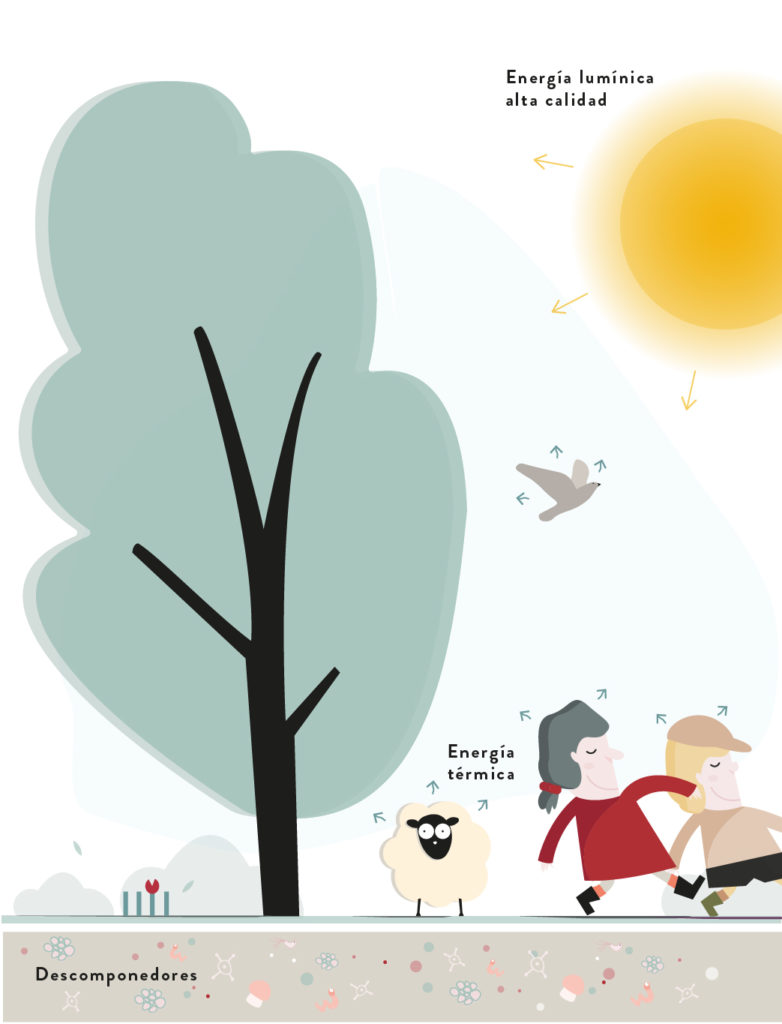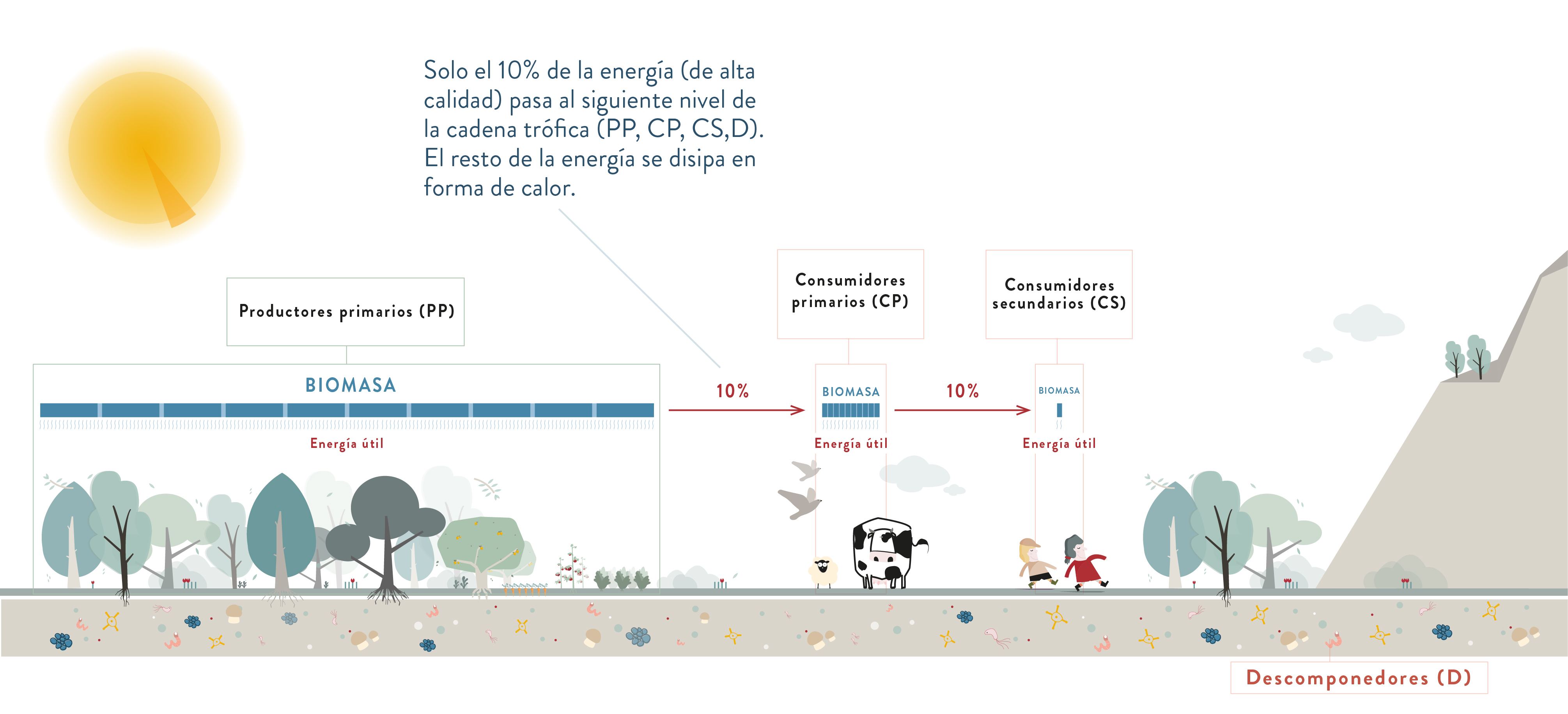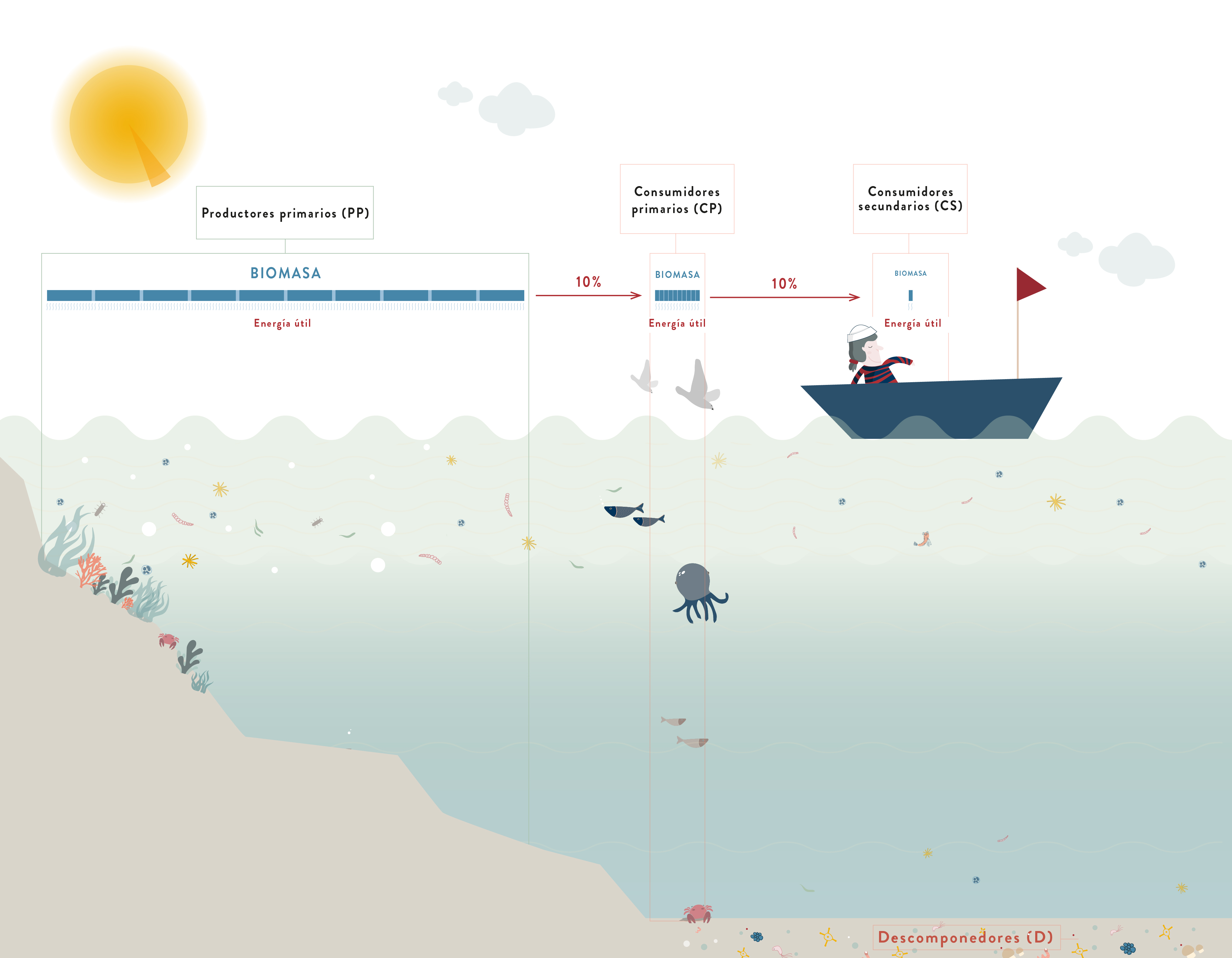ECOLOGÍA
La vida en los ecosistemas, tanto terrestre como marino, se mantiene por dos procesos:
- FLUJO DE ENERGÍA.
- CICLO DE MATERIALES O NUTRIENTES
Un flujo que se inicia con la energía lumínica de alta calidad procedente del sol, almacenada en forma de biomasa (gC/m2). Parte de esta energía se transfiere entre los seres vivos que están cerca o en la superficie de la Tierra. Otra parte, finalmente vuelve a la atmósfera en forma de energía térmica.
Un ciclo de materiales o nutrientes que necesitan todos los organismos para poder vivir, crecer y reproducirse. Especialmente destacable es el papel de los DESCOMPONEDORES para cerrar y mantener este ciclo de nutrientes.

Las plantas transforman la energía radiante del sol en energía química a través de la fotosíntesis, y parte de esta energía queda almacenada en forma de materia orgánica. Esta materia orgánica es la biomasa (gC/m2)
La BIOMASA es aquella materia orgánica de origen vegetal o animal, incluyendo los residuos y desechos orgánicos, susceptible de ser aprovechada energéticamente.
VIDA EN EL ECOSISTEMA


